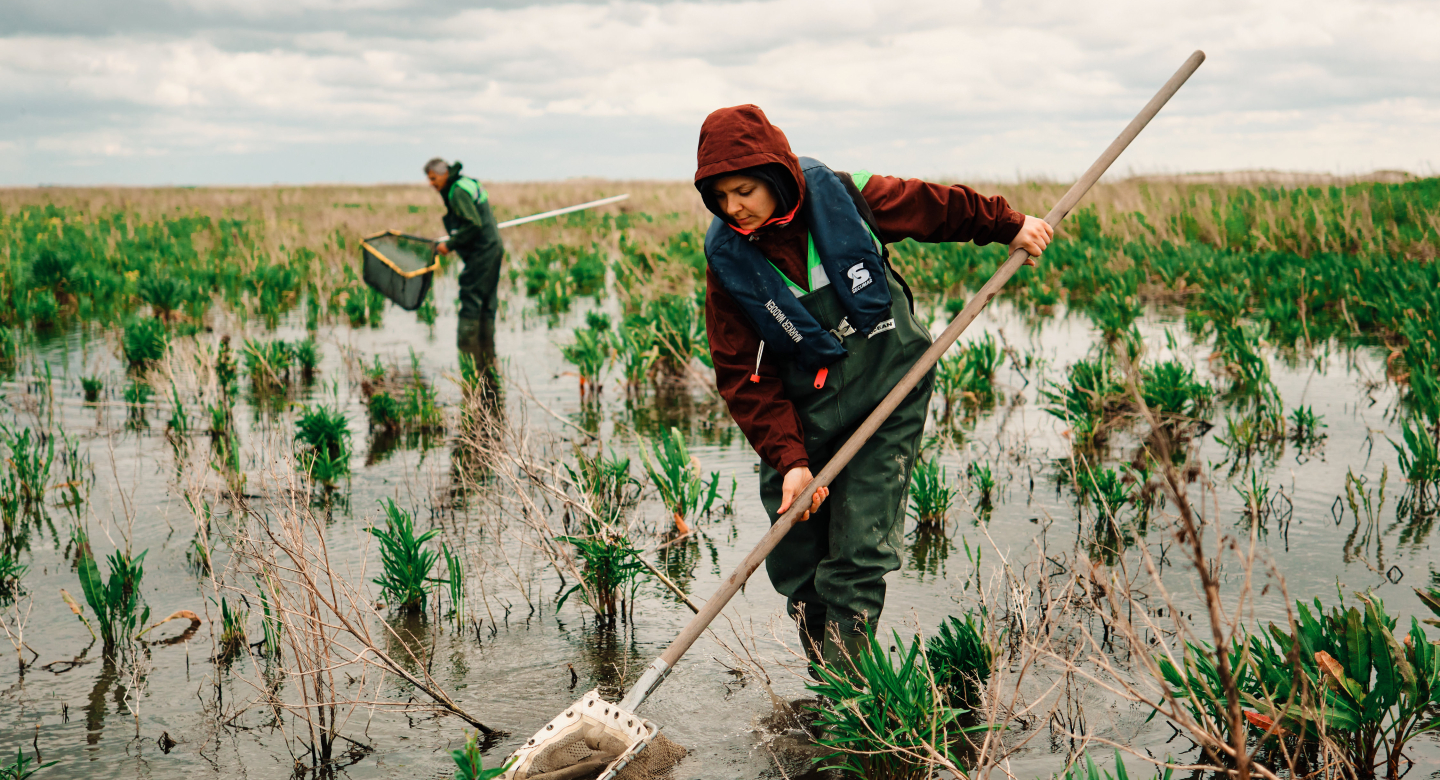

Marker Wadden: when dead water meets new life
Marker Wadden is a modern icon of Dutch hydraulic engineering, showcasing innovation with global appeal. Like Flevoland, which was once built from scratch on the bottom of the former Zuiderzee, Marker Wadden embodies the progressive spirit of the Netherlands, in Nieuw Land National Park. A group of artificial islands built from the lake’s own materials is revitalising a once-dying lake. With its extensive land-water transitions, new habitats emerge, creating vital spaces that support aquatic life and restore the ecological health of the Marker Lake.
Made from locally sourced sand, clay, and silt, these islands are designed to sustain a dynamic natural balance, blending human ingenuity with natural processes. A core aspect of this innovation is improving water quality through the sedimentation of silt. Silt floating in the Markermeer is transferred to Marker Wadden and stabilised there, leading to clearer water in the rest of the lake. This clearer water promotes the growth of aquatic plants, which in turn provide habitat for fish and invertebrates. Marker Wadden is both a tribute to Dutch hydraulic tradition and a model for a sustainable future.
Increased biodiversity
Marker Wadden has already become a haven for bird biodiversity, hosting large populations of species like the avocet, common tern, and great tern. It also serves as a critical stopover for migratory birds, while fish species such as pike and perch benefit from the new habitats. This thriving food chain strengthens the ecosystem’s resilience. An important part of the project is the “living lab” concept: Marker Wadden operates as an expansive field for ecological research. The Marker Wadden Knowledge and Innovation Programme (KIMA) oversees ecological and technical studies here, in collaboration with 10 partners, including Natuurmonumenten. Wageningen Marine Research, and the University of Amsterdam. The programme aims to increase the social added value of Marker Wadden and make the knowledge gained applicable worldwide. Ecological developments are closely monitored by leading Dutch universities and research institutions, generating valuable data on ecosystem restoration.
A global solution
Marker Wadden offers a model with global relevance, addressing widespread issues like sedimentation, water quality decline, and biodiversity loss. The innovative approach of creating artificial islands and reusing local materials to restore natural habitats sets a standard other countries can adopt. Visitors can experience the pioneering Marker Wadden project firsthand; a 45-minute boat ride from Lelystad brings you to one of the islands open for exploration. Guided tours by Natuurmonumenten reveal the ecological and technical marvels behind the project. Marker Wadden’s blend of natural beauty and environmental innovation makes it a must-see. By improving water quality, creating new habitats and promoting a healthy ecosystem, this project exemplifies how local efforts can tackle global environmental issues, proving that collaborative, innovative ecological engineering is essential for a sustainable future. Marker Wadden stands as a testament to this approach, with lessons to share worldwide.
#NewDutch is a mentality, a movement, and an international platform for Dutch innovation. Discover the makers of tomorrow on www.newdutch.nl and join us!![]() Home
Home






